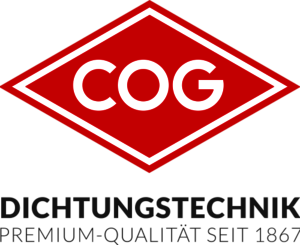Latest PFAS information
What are PFAS and why is a restriction proposal under way?
What are PFAS?
PFAS (per- and polyfluoroalkyl substances) are a group of more than 10,000 synthetic chemicals known for their water-, grease-, and dirt-repellent properties. They are used in a wide range of applications, including textiles, food packaging, cosmetics, and firefighting foams. Due to their extreme persistence in the environment, PFAS are often referred to as “forever chemicals.” Their high environmental and biological persistence leads to accumulation in ecosystems and the human body, and has been associated with potential health risks such as liver and kidney damage, and certain types of cancer.
The EU restriction proposal
In February 2023, Germany, Denmark, the Netherlands, Norway, and Sweden submitted a comprehensive restriction proposal to the European Chemicals Agency (ECHA). This group-based approach aims to largely restrict the manufacture, placing on the market, and use of PFAS within the EU. The proposed restriction includes specific derogations for uses where PFAS are considered essential for society and where no suitable alternatives are currently available.
What is the current status of the PFAS Restriction Process?
- Current Procedural Status (June 2025)
Public consultation: This phase ended on 25 September 2023. More than 5,600 comments were submitted by approximately 4,400 organizations, companies, and individuals, with inputs now under review by both the authorities who submitted the dossier and ECHA’s scientific committees (RAC and SEAC)
ECHA assessment: The scientific committees (RAC for risk assessment and SEAC for socio-economic analysis) are currently analysing the extensive input. Additional use cases—such as sealing applications, technical textiles, printing, and medical/pharmaceutical packaging—have been identified and are being integrated into sector-specific assessments.. Alternative restriction options (e.g., managed use under specific conditions rather than total bans) are also being evaluated for essential sectors like batteries, fuel cells, and electrolysers. This process is ongoing, and no definitive completion date is available.
EU Commission decision: Once RAC and SEAC have finalised their opinions, the European Commission will decide on the final restrictions. No binding timeline has been announced.
Addendum to the restriction proposal: In a progress update released on 20 November 2024, ECHA reported that additional uses—such as sealant (e.g., fluoropolymers in sealing applications)—were identified and are being incorporated into the proposal The update also indicates that alternative options allowing manufacturing, placing on the market, and use of PFAS under certain conditions (e.g., promoting circular economy principles) are being considered.
Effective date of a general PFAS ban: Whether and when a comprehensive PFAS ban will come into effect remains uncertain.
Partial bans already in force:
PFHxA and related substances: Restrictions have been in place since 10 October 2024 for their use in textiles, food packaging, cosmetics, and certain firefighting foams.
PFOA in foam agents: Manufacturing and sales have been banned since 4 July 2020. Use by end-users is permitted until 4 July 2025, provided certain conditions are met.
Political and economic considerations: The European Commission has signalled that exemptions could be possible for applications deemed essential to the digital and ecological transition and EU strategic autonomy, provided viable alternatives are not available. Areas of potential exemption may include energy transition, medical technology, and the semiconductor industry.
Implications for Companies and Consumers
A gradual reduction in PFAS-containing products is already underway. It is advisable for businesses and consumers to begin exploring alternative materials and products now and prepare for necessary transitions.
How COG Approaches the PFAS Restriction Process?
- At COG, we are actively qualifying fluoropolymers produced without PFAS‑based surfactants to ensure the continued availability of high‑performance materials that meet current and emerging regulatory requirements.
- Through close customer collaboration, we are identifying PFAS‑free alternatives for specific sealing applications, aiming to co‑develop bespoke and sustainable solutions.
- We also maintain vigilant monitoring of the market and the European Chemicals Agency’s activities, allowing us to react early to regulatory shifts and inform you promptly about any potential effects.

